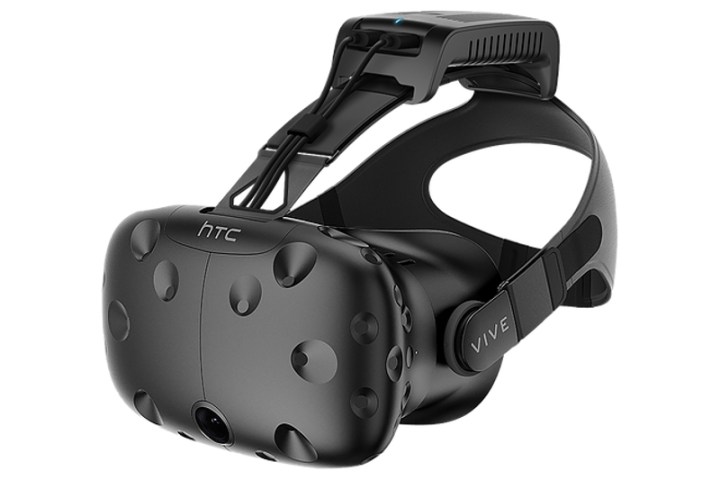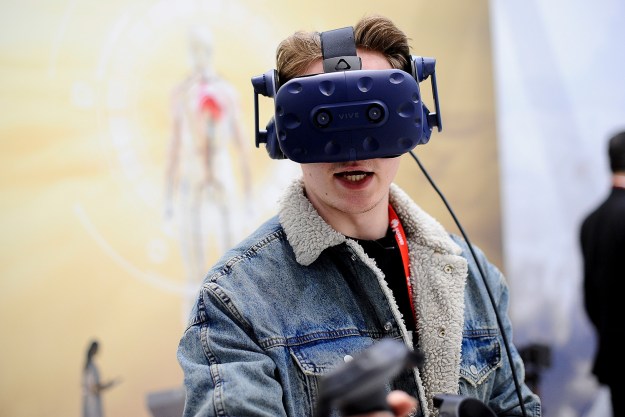
TPCast cuts the cord by establishing a wireless connection between the HTC Vive and the parent PC. If you’re not familiar with the Vive’s hardware, it depends on an included Link Box that serves as a hub between the headset and the parent PC. The Link Box plugs directly into an electrical outlet to send power to the Vive headset. It also links the PC’s video output to the headset, and links the headset’s USB output to the PC. TPCast eliminates the need for the Link Box and all the associated trip-inducing wiring.
The kit includes an HMD Receiver that mounts on the HTC’s top strap, and plugs into the HDMI and USB ports on the back of the headset. The Vive is powered by a separate Power Box that fits into your pocket, and connects to the power input on the headset. On the computing end, the kit provides a PC Transmitter that must be plugged into an electrical outlet along with the HDMI port on the parent PC.
But that’s not all. The kit also includes a wireless router pre-configured and optimized for the over-the-air PC-to-HTC connection. Simply connect an Ethernet cable from a LAN port on your current router to the WAN port on TPCast’s router, and then connect the parent PC via Ethernet to a LAN port on the TPCast router. The PC must then be configured to automatically obtain an IP address and DNS server address from the TPCast router.
According to the company, the kit is capable of transmitting a 2K resolution with a delay of less than two milliseconds. That’s important given all the heavy data that is tossed between the HTC Vive and the parent PC, including audio, scene rendering for each eye, positional tracking, motion tracking, and so on. A higher latency can break the illusion, and possibly cause nausea due to sudden visual movements and/or frame drops.
“Gone are the days when VR users must settle for the tethered experience,” says founder and CEO Michael Liu. “North American users can now experience true freedom – the freedom to explore a beautiful scene, to turn 360 degrees, jump, and even flip without impediment. We believe this industry milestone changes the game for VR unleashing it into a wireless world.”
The instructions show that the stand-alone Power Box consists of a removable battery that can be recharged using a smartphone charger. The battery takes around 9 to 12 hours to fully recharge.
To pre-purchase the $299 TPCast kit, head to the official website, Amazon, Newegg, or other online retailers. The device will start shipping on November 24, 2017.
Editors' Recommendations
- HTC aims to turn your carpool into a VR roller coaster
- The most common HTC Vive problems, and how to fix them
- How to watch HTC’s ViveCon today, the ‘most important VR event of the year’
- The best VR-ready laptops you can buy right now
- Oculus Rift vs. HTC Vive


